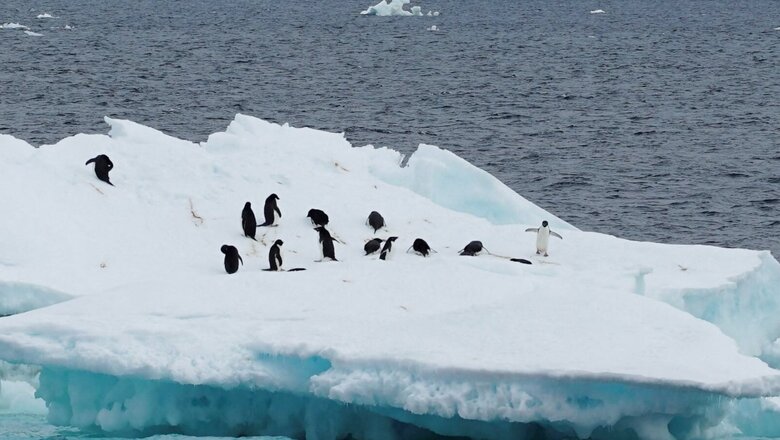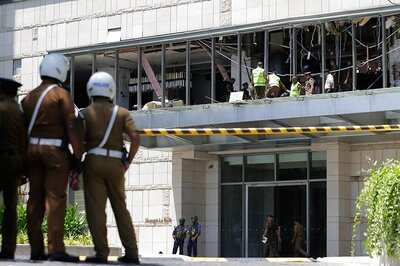
views
Days ahead of the start of the 27th United Nations Climate Change Conference (COP), a new report declared that the current combined pledges of 193 parties under the Paris Agreement are not enough to limit the rise of global temperatures to 1.5℃ by 2100.
The analysis from the UNFCCC secretariat coincided with another major report released by the World Meteorological Organisation (WMO) on Tuesday which showed that atmospheric levels of the three main greenhouse gases — carbon dioxide, methane, and nitrous oxide — all reached new record highs in 2021.
Both reports are set to be discussed at the biggest annual climate change conference beginning on November 6 in Egypt with representatives of over 193 countries under one roof till November 18. The focus this year would be on mitigation, adaptation, loss and damage, and finance. Countries would be urged to enhance implementation and raise ambition on climate action, and ensure adequate financial flows including the $100 billion to the most vulnerable countries.
ONLY 24 NEW/UPDATED PLANS
The world is now warmer by more than 1.1°C above the 1850–1900 pre-industrial average, triggering a spate of extreme weather events across the globe. Yet only 24 new or updated climate plans were submitted since COP26 at Glasgow last year, where all countries had agreed to revisit and strengthen their climate plans, lamented executive secretary of the United Nations Framework Convention on Climate Change (UNFCCC) Simon Stiell.
“Government decisions and actions must reflect the level of urgency, the gravity of the threats we are facing, and the shortness of the time we have remaining to avoid the devastating consequences of runaway climate change,” said Stiell, urging governments to come to COP27 to show how they will put the Paris Agreement to work in their countries as well as how they will cooperate and provide support for implementation.
GLIMMER OF HOPE
While the latest UNFCCC report confirmed yet again that the world is currently off-track on achieving the Paris Climate Goal and keeping the 1.5 degrees within reach, there was a glimmer of hope.
The report found a small improvement from last year, following the upgradation of Nationally Determined Contributions (NDCs) by some countries. India too had submitted revised NDCs at Glasgow, committing to achieving about 50% cumulative electric power installed capacity from non-fossil fuel-based energy resources by 2030.
According to the latest analysis of current commitments, full implementation of all the latest NDCs is estimated to lead to a 3.6 per cent emission reduction by 2030 relative to the 2019 level, better than what was estimated in 2021. Last year’s analysis also showed that projected emissions would continue to increase beyond 2030. However, this year’s analysis showed that while emissions are not declining, they are no longer increasing after 2030.
The report analysed the 166 climate action plans (NDCs) representing 193 parties to the Paris Agreement, including 24 updated or new NDCs submitted after the UN Climate Change Conference in Glasgow (COP26) till September 23. Taken together, the plans cover 94.9% of total global greenhouse gas emissions in 2019.
HIGHEST SPIKE IN CO2, METHANE EMISSIONS
Meanwhile, the WMO’s Greenhouse Gas Bulletin reported the biggest year-on-year jump in atmospheric concentrations of methane, carbon dioxide (CO2), and nitrous oxide (N2O) in 2021, and the levels continue to rise in 2022 as well. The atmospheric concentration is measured by what remains in the atmosphere after gases are absorbed by sinks like the ocean and biosphere. This is not the same as emissions.
While the methane concentration has been increasing at an accelerating rate since 2007, its annual increases in 2020 and 2021 are the largest since systematic record began in 1983. While the reason for the exceptional increase is yet to be investigated, it seemed to be a result of both biological and human-induced processes, said scientists.
Atmospheric carbon dioxide too reached 149% of the pre-industrial level in 2021, mainly due to emissions from the combustion of fossil fuels and cement production. According to the WMO scientists, between 1990 and 2021, the warming effect on our climate by long-lived greenhouse gases rose by nearly 50%, with carbon dioxide accounting for about 80% of this increase. Of the total emissions from human activities during the 2011–2020 period, about 48% accumulated in the atmosphere, 26% in the ocean, and 29% on land.
Read all the Latest News here




















Comments
0 comment